#Virginia Resolution of 1798
Explore tagged Tumblr posts
Text
The La Harpe Expedition - Today In Southern History
24 December 1721 On this date in 1721… French explorer Benard de la Harpe started an expedition up the Arkansas River. With 16 Frenchmen, he travelled all the way to the Rocky mountains and returned. La Harpe recommend establishing a trading posts along his route to New Mexico. Other Years: 1798 – The Virginia state legislature passed James Madison’s Virginia Resolution to nullify the…
0 notes
Text
“I confess that it seems to me exceedingly clear, that our Constitution is most worthless and tyrannical, if the usurpations of those who administer it, cannot be resisted by any means short of revolution. I have always considered the reserved powers of the Federal Government; and I have always considered it, not only the right, but the imperious duty of the States, so to apply that check, as not to dissolve the Union.”
-Abel Upshur, Nullification: An Exposition of the Virginia Resolutions of 1798
0 notes
Text
States of the United States vs. the Federal Government
States of the United States vs. the Federal Government: http://wp.me/prazu-12S
From before the adoption of the US Constitution in 1787, there has been strenuous argument, sometimes bordering on the violent, between those who wanted a strong central government and those who saw the individual states as the primary locus of governmental power—except for those 18 specific powers granted to the two houses of the federal government, as enumerated in the Constitution. (Former…
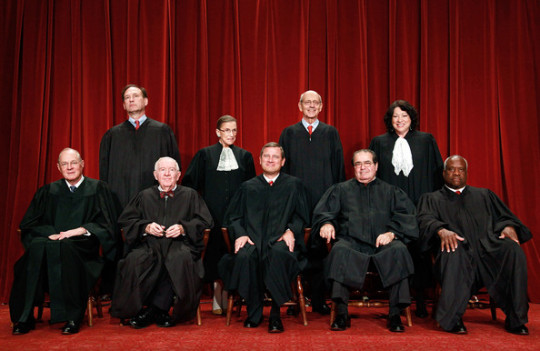
View On WordPress
#Alien and Sedition Acts#Articles of Confederation#Continental Congress#enumerated powers#Kentucky Resolution of 1799#Ninth Amendment to the US Constitution#nullification of federal statutes#Tenth Amendment to the US Constitution#The Articles of Confederation and Perpetual Union Between The States#The Federalist Papers#Virginia Resolution of 1798
0 notes
Text
In the Virginia Resolutions of 1798, Madison wrote that “in case of a deliberate, palpable, and dangerous exercise” of power by the federal government, states “have the right, and are in duty bound, to interpose for arresting the progress of the evil.”
#in duty bound#james madison#government tyranny#states rights#federal government#virginia resolutions of 1798
2 notes
·
View notes
Text
Battles of Mackinac Island (1812) & (1814): Fights for control of the Old Northwest of America and Great Lakes during the War of 1812.
The War of 1812 (1812-1815) between the US and UK is sometimes cited as a “forgotten” war. However, that would be an inaccurate description and depends on the participants you ask. Remembered in the United States as a “Second War of Independence” it was treated as sort of a victory due to the lack of territorial change and the major victories such as the Battles of Lake Erie, Baltimore, Plattsburgh and New Orleans. In Canada, at the time a British colony, its remembered for its role in forging an Canadian national identity and the repelling of repeated American invasions. In Britain, its little remembered other than as a sideshow for the Napoleonic Wars. Meanwhile, for the Native American tribes that fought on the side of the British its largely remembered as a devastating loss that lead to permanent displacement and the consolidation of American expansion east of the Mississippi River. The war was in fact a military and political stalemate and had multiple causes and was fought by participants who were ill prepared for the management of executing a war at that time and was marked by repeated blunders and tended to favor a defensive over offensive strategy between both sides.
Background:
-1781 with the American victory at the Battle of Yorktown in Virginia saw an end to major combat in the American Revolution. 1783 saw Britain finally recognize America’s independence. Anticipating America as a major commercial trading partner. It sought to offer generous and lenient terms to the 1783 Treaty of Paris which included granting the US all territory east of the Mississippi River and south of the Great Lakes, an area sparsely populated by Europeans at the time and held a variety of many Native American tribes. This territory was considered the Northwest of the United States at the time and from 1787-1803 was referred to the as the (US) Northwest Territory and encompassed all of the modern US states of Ohio, Michigan, Indiana, Illinois & Wisconsin.
-The area was important to the Europeans and later European Americans for its role in the fur trade Great Lakes fishing and geopolitical control over North American continent.
-Following the 1780′s until the time of the War of 1812, American settlement in the area grew but remained sparse and relegated to a few scattered settlements with Native American tribes sometimes friendly and sometimes hostile to the United States residing alongside the new settlers. The fur trade remained dominant in terms of economic interest. The British also maintained a military presence in the area despite the Treaty of Paris handing over the territory to the Americans.
-Tensions with the British backed Native Americans and European American settlers boiled over into the Northwest Indian War (1785-1795) which resulted in an US victory at the 1794 Battle of Fallen Timbers. American settlement into Ohio Country was ascertained after this point and the British withdrew their minimal forces in the area (Ohio). Though tensions remained, due in part to some British presence remaining in the sparsely settled Northwest.
-The other major development of the 1790′s and onward was the French Revolution and later Napoleonic Wars of the early 19th century which grew out of that. The United States had to determine its course of action relative to the greater European conflict between France and the various older monarchies they fought, namely Britain.
-Under President George Washington, the US adopted a stance of neutrality that sought trade with both Britain and France. The Jay Treaty he had signed with Britain was very controversial but Washington saw economic prosperity for America rather than war as its ultimate goal. Neither France nor Britain responded well to neutral American trade with its rival. The French Republic and the US fought a limited low level conflict called the Quasi War (1798-1800) which ultimately ended in no victory for either side and the old Franco-American alliance of the Revolutionary period gave way to a new one based more on free-trade. Coupled with the Louisiana Purchase of 1803 which expanded American owned territory to the Trans-Mississippi, the British saw these developments as undesirable.
-From 1792-1815 aside from a previous 14 month peace Britain and France remained at war. For the most part Britain dominated the seas with the Royal Navy while France under Napoleon Bonaparte dominated the European continent. Britain maintained blockades of France as well as providing mostly subsidies to its Continental partners in Austria, Prussia, Russia and others rather than provide many ground troops since Britain possessed a small but professional army.
-Only after Napoleon’s invasion of Portugal and subsequent betrayal and conquest of Spanish ally did Britain provide a large long term ground troop presence on the continent, fighting in the Iberian theater’s Peninsular War (1807-1814).
-During the course of these events America’s merchant fleet doubled and became the world’s largest neutral merchant fleet. This caused resentment in Britain who felt it might be eclipsed by the US eventually in terms of trade.
-The US was not untested during this time having fought the First Barbary War against Tripoli (Libya) by using a naval bombardment combined with a US Marine and Arab-Greek mercenary force to defeat the Barbary pirates at the Battle of Derna. A treaty was signed freeing all American sailors taken as prisoner and made slaves by the Muslim pirates of Tripoli. The war demonstrated American power projection overseas for the first time and was noted by the European powers of the day.
-However, the French rivalry with Britain drove most events in and around America’s relations with Europe and the practice of impressment by both the French and British navies caused real ire in the US. Impressment was the force pressing into service of sailors to work aboard British or French ships and it included the stopping and seizure of neutral American military and merchant vessels and their crews. The British practiced it more than the French and Britain argued that any trade that benefitted France in war time was not to be permitted. This angered the American government and public at large.
-Additionally, Britain argued they were looking for either runaway British subjects on the ship or refused to recognize British citizenship being renounced in favor of American citizenship and in their eyes were simply fulfilling Admiral Horatio Nelson’s famous quip “England expects that every man will do his duty.”
-America saw this as a clear violation and illegal of the rights of neutral nations. President Thomas Jefferson responded with the Embargo Act to in his mind hurt European trade to the point they would ease up on America and cease impressment. It did not work and in the end hurt American trade more.
-By 1812, under President James Madison, the push for war in the US reached fever pitch in some quarters (outside of New England). The US could no longer stand for British impressment which included taking Americans who were never British subjects along with the continued British support for Native American aggression in the Northwest territory now known as the Michigan & Indiana Territories. Britain had promised to sponsor a Native American buffer state in these territories in the event of a successful war with America. They would also provide weapons, men and goods to support this effort as they had in the past. To answer this support was Tecumseh’s Confederacy, a mix of Native American tribes under the leadership of a Shawnee leader named Tecumseh.
1812: War is declared and the Capture of Fort Mackinac.
-In June 1812, the US declared war and indeed war might have been avoided on Britain’s side had their Prime Minister Spencer Perceval not been assassinated at the same time in May 1812. Perceval had hoped for a diplomatic resolution to tensions with America, knowing Britain could ill afford war in the Americas.
-America declared war but had a small regular army due to a longstanding reliance on the militia system which had existed since colonial times in the 17th century. Their plans involved invading Canada but due to the understanding that militias in some states might only operate locally were not well coordinated and faced many logistical issues to coordinate.
-News of the war’s outbreak reached Britain’s Canadian colonies prior to Britain itself so it required the small number of British troops supported by local Canadian militias Native American auxiliaries to fight the war on Britain’s behalf.
-Issac Brock, a Major General in charge of the defense of Upper Canada (Ontario) sought to make early gains to offset the American plans at the war’s outset, one plan involved capturing Mackinac Island in the Great Lakes due to its strategic location.
-Mackinac Island is a relatively small island located near the Straits of Mackinac where Lakes Michigan and Huron meet in the Great Lakes chain. Today it is located between off the lake shore southeast of Michigan’s Upper Peninsula and near the Lower Peninsula.
-Mackinac was a place of spiritual significance to the Ojibwe and other Algonquian speaking peoples of the Great Lakes region. Said to be the home of Gitche Manitou or creator spirit. It also became a vital trading center for the French and later British fur traders in the region. It was ceded to the Americans following the 1783 Treaty of Paris and held a small fur trading outpost and fort by the time of war’s outbreak in 1812.
-Brock dispatched a force of 600 regular British troops, Canadian militiamen, frontiersmen and Native Americans to surprise the American force on Mackinac. Due to Mackinac’s remoteness and other more pressing factors, news of war’s declaration in June 1812 had not yet made it to the island by the following month.
-Fort Mackinac occupied a limestone ridge overlooking the harbor on the southern end of Mackinac Island. It faced several deficiencies despite holding a commanding view. The force was small to begin with and only had seven cannons for its defense with only one capable of reaching attacking ships in the harbor. To make matters worse, they acquired their water supply from a spring fed on higher ground above the fort which meant their water supply was easy to cutoff in the event of siege
-Roberts having captured a fur trader named Michael Dousman who had been dispatched by American commander Porter Hanks to investigate reports of unusual activity at nearby St. Joseph’s Island was able to get valued information from his new captured informant on the condition of Mackinac’s defenses. Having learned the Americans were unaware of war’s declaration and now having a layout of their defenses Roberts implemented a plan.
-On early morning July 17th The British/Native American force would land on the northwest side of the island at a spot to be aptly called later, British Landing, some two miles from the fort. They landed on the shoreline and marched through the small road and woods through the island’s center taking high ground above the fort. Awaking the few villagers on the island they removed them from harms way and placed a cannon on the ridge above the fort at dawn and fired a single shot to warn the Americans of their presence. They sent a flag of truce to Hanks demanding surrender of the fort or face a siege. Hanks complied without firing a single shot and surrendered the whole garrison as he feared resistance would lead to a massacre from the Native American contingent. Having captured the fort without a fight, the British now controlled the whole island and the area around it.
-Roberts released the American garrison on the promise it would not fight for duration of the war. The permanent residents-fur traders and a few farmers were offered the choice to swear an oath of allegiance to the British Crown or they would be allowed to leave, most took up the oath and carried on with their business. The British did not loot any homes, resided in the fort and paid for some food to their Native American allies while the regular soldiers were fed on rations intended for the US garrison kept in government storehouses.
-Most of the Native Americans contingent left, returning to either Wisconsin or to help Tecumseh fight the Americans elsewhere. Meanwhile, the British consolidated their position on the island.
1814: Battle of Mackinac Island
-The British also captured Fort Detroit and it with that fort captured, the Americans could not attempt to retake Mackinac Island. In 1813, the Americans had a change in fortune from the disasters of 1812. They won the definitive naval battle on the Great Lakes, defeating the Royal Navy in the Battle of Lake Erie. They also recaptured Detroit and pursued the retreating British into Canada catching up with them at the Battle of the Thames where they killed Tecumseh and shattered his Native American coalition as a threat once and for all.
-Meanwhile, the British garrison on Mackinac remained in place without event for the next two years since its capture by them but the retaking of Detroit and the victory at Lake Erie and the Thames all in 1813 cut off fresh British supplies. The British garrison was forced to cut rations in half over the winter of 1813-14 to stagger their supplies, they also stored locally grown corn and took to fishing to supplement their food supplies.
-The British decided to open a new supply route from the eastern Great Lakes since the route from Lake Erie was no longer possible. Robert McDouall of the Glengarry Light Infantry, a Canadian raised regiment known for their green jackets was ordered to assist in this in early February 1814. The Glengarries were made of Catholic Scottish emigrants to Canada. Joined by men of the Royal Newfoundland Fencibles who helped serve as marines along with some sailors and artillerymen, McDouall arrived on May 18th with fresh provisions of food, munitions and other supplies to the half-starved garrison. Days later 200 Native American reinforcements came under command of Robert Dickson, a Canadian fur trader and Indian Agent for the British colonial government’s Indian Department.
-McDouall immediately took charge and ordered a stockade and blockhouse be built on the ridge above the current fort, they named it Fort George, it gave a more commanding view of the island’s harbor and placed them more out of reach from ship cannons from any attacking force. The British force that summer numbered 150-200 Native American warriors, 125-150 British regulars and 25-30 militiamen.
-Meanwhile, America aware of the resupply of Mackinac sought to retake the island for its strategic location. The plan called for leaving from Detroit for the island and to attack it with a superior force just as the British had down.
-McDouall also built breastworks and entrenchments along a ridgeline overlooking a farm to the north of the fort in the center of the island. This was in the line of the British advance two years before.
-The American force consisted of five ships under Arthur Sinclair and 700 ground troops under George Croghan. The American squadron did not have detailed knowledge of the island or region and attacked and burnt the old British post on St. Joseph island in their search for Mackinac.
-Due to their delay, McDouall was aware of their approach and upped his defenses calling in nearby British companies for support and finalizing his defenses.
-July 26th saw the Americans bombard the island from the harbor on its southern shore but the guns missed their mark as Fort George stood too high for their guns to do damage. Famously, the cannonballs only landed in the vegetable gardens below the fort. After two days they called off the attack
-Faced with developing heavy fog, the Americans withdrew from the island for almost a week. They decided to rethink their plan and approach from the northwest of the island as the British had two years before. In fact landing right at the same spot (British Landing).
-The American landing force would follow the same route as the British up the center of the island and storm the fort from the high ground on the north.
-However, unlike the British the American force gave no element of surprise. They would attack in the middle of day after having bombarded the woods near British Landing in the misguided belief Native Americans were in the area waiting to ambush. All this did was alert the British to inevitable American approach. McDouall left 25 men to man Fort Mackinac and another 25 Fort George on the high ground. The rest of his British/Canadian/Native American force would man the earthworks to the north, lining the crest of the ridge facing north where the Americans would be approaching. The Americans would have to approach through a farm in the island’s center giving a clear line of their approach.
-Though outnumbered, the British defenses, holding the high ground and the clear line of shot gave them considerable advantages to the Americans. Not to mention the crucial loss of surprise the Americans had foregone in favor of superior numbers.
-Both sides maintained two cannons each to start the battle (afternoon August 4th) with an inaccurate artillery duel firing at each other, neither doing any real damage. The American force consisted of some regulars and large number of Ohio volunteer militia which Croghan used to outflank the British left while some regulars would flank their right but found the dense woods to slow their advance.
-Meanwhile, McDouall dispatched a number of troops to island’s west on the false report that another American landing was taking place.
-American regulars were ambushed by Native Americans in the woods leading to the death of their immediate commanding officer Major Andrew Holmes.
-in the confusion of the ambush the American troops lost heart and retreated, this in turn
-Croghan’s main force did advance toward the British line but just as some Americans reached the top of the ridge, the British line was reinforced by the British regulars who went to investigate the false report of the 2nd American landing. This combined with the Native force’s ambush demoralized the Americans and Croghan called a retreat, falling back through the woods they reached the shore and rowed back to their ships. The British had won the day but just barely.
-Casualties were light with only member of the British force dead and another wounded. The Americans suffered 13 dead mostly from the ambush of Holmes’ men in the woods, they also had 51-55 wounded to varying degrees, two of the wounded were taken prisoner.
Aftermath:
-The War of 1812 was a back and forth affair with early upsets for the Americans in 1812, then numerous victories in 1813 such as Lake Erie, Thames and even the burning of York (Toronto) provincial capital of Upper Canada.
-1814 was a in turn a disaster for both sides, the British extended a blockade of the American Atlantic seaboard which hurt the economy. They also managed to defeat American efforts in the Northwest Territory, winning not only Mackinac Island but another small victory on the Mississippi River at Prairie du Chien in Wisconsin. They also most famously invaded and captured Washington DC, burning both the US Capitol building and the White House. However, their attempt to take Baltimore, Maryland ended in sound defeat as was a major defeat at Plattsburgh in land-naval battle on Lake Champlain in upstate New York. These American victories frustrated the British invasions just as American invasions into Canada had been repelled.
-Combined failures on both sides, strained economies and the seeming end of Napoleonic Wars by late 1814 dropped the need for impressment by the Royal Navy, ending an American cause for war. Additionally, the British sponsored Native American confederacy was irrevocably shattered following Tecumseh’s death. So negotiations began on both sides taking place in Ghent (modern Belgium) then part of the Netherlands. The Treaty of Ghent was signed on December 24th, 1814 marking a stalemate. Neither side would gain or lose territory and peace would be made. The British would drop their support for a Native American buffer state, abandoning almost once and for all any hope of slowing American permanent settlement into area south of the Great Lakes.
-Since news took weeks to travel by sea from Europe to America the treaty’s signing did not yet reach the US and a British invasion force of New Orleans was under way in December 1814 in the hopes of using the city as a bargaining chip for negotiations. However, like Baltimore & Plattsburgh, it turned into a disaster when in January 1815. A then relatively unknown Andrew Jackson, lead a successful defense against the British invasion in the Battle of New Orleans, the victory was the most one sided of the war and its infamy propelled Andrew Jackson to nationwide fame to later become 7th President of the United States. The US Congress ratified the peace treaty less than two months later.
-Mackinac Island was returned the Americans peacefully in 1815 and has remained part of the United States ever since. The fortifications still stand, the island is a Michigan state park, the island is a major tourist destination, artist colony and resort location with the Governor of Michigan maintaining a summer residence there. The battlefield today is mostly a golf course in the center of the island.
-The Battles of Mackinac Island are not the best known events of the War of 1812 and the two battles that took place there were relatively small in scale with light casualties and numbers of troops involved but they serve to show the importance the Great Lakes and then Northwest Territory held for the Americans, British and the Native Americans at the time. They also serve as a microcosm of the war’s frustrating character, a mix of all its combatants: Americans, Canadians, British & Native Americans all with vested interest in the war’s outcome and a location changing hands but by war’s end going right back to its start.



#military history#war of 1812#michigan#mackinac island#usa#british empire#canada#1814#native americans#lake huron#lake michigan#great lakes#wisconsin#upper peninsula#fort mackinac
6 notes
·
View notes
Text
Remember when not one, but two U.S. presidents fought for our right to disrespect our government? Because I always will
3 notes
·
View notes
Text
Today in Supreme Court History: December 24, 1798
Today in Supreme Court History: December 24, 1798
12/24/1798: The Virginia Resolution, authored by James Madison, is published. James Madison The post Today in Supreme Court History: December 24, 1798 appeared first on Reason.com. Source link
View On WordPress
0 notes
Text
History Question
You will need to read “Virginia and Kentucky Resolutions (1798)” (but please only read the Kentucky Resolution section) and “South Carolina Exposition and Protest”. Write an introduction outlining the basic argument of state powers versus national powers. You may want to turn to the Constitution itself to find material. Write a brief summary of why each document was written. What is the…
View On WordPress
0 notes
Text
Write a conclusion that answers whether or not a state should have the ability to nullify a national law, and if so, under what circumstances?
Write a conclusion that answers whether or not a state should have the ability to nullify a national law, and if so, under what circumstances?
Task For this essay, you will need to read “Virginia and Kentucky Resolutions (1798)” (but please only read the Kentucky Resolution section) and “South Carolina Exposition and Protest”. In your essay, you should: Write an introduction outlining the basic argument of state powers versus national powers. You may want to turn to the Constitution itself to find material. Write a brief summary of why…
View On WordPress
0 notes
Text
Write a conclusion that answers whether or not a state should have the ability to nullify a national law, and if so, under what circumstances?
Write a conclusion that answers whether or not a state should have the ability to nullify a national law, and if so, under what circumstances?
Task For this essay, you will need to read “Virginia and Kentucky Resolutions (1798)” (but please only read the Kentucky Resolution section) and “South Carolina Exposition and Protest”. In your essay, you should: Write an introduction outlining the basic argument of state powers versus national powers. You may want to turn to the Constitution itself to find material. Write a brief summary of why…
View On WordPress
0 notes
Text
Task For this essay, you will need to read “Virginia and Kentucky Resolutions (1
Task For this essay, you will need to read “Virginia and Kentucky Resolutions (1
Task For this essay, you will need to read “Virginia and Kentucky Resolutions (1798)” (but please only read the Kentucky Resolution section) and “South Carolina Exposition and Protest”. In your essay, you should: Write an introduction outlining the basic argument of state powers versus national powers. You may want to turn to the Constitution itself to find material. Write a brief summary of why…
View On WordPress
0 notes
Photo
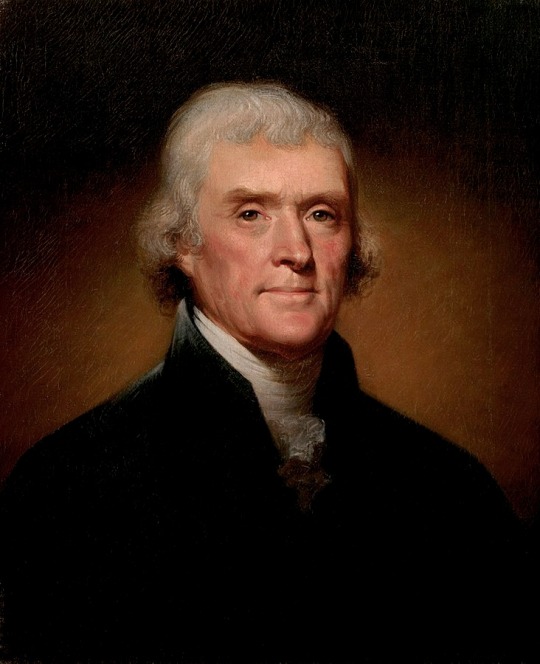
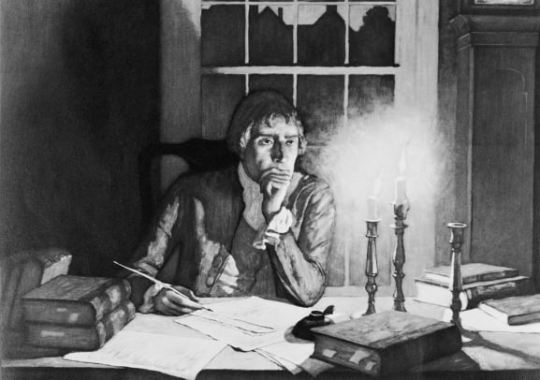
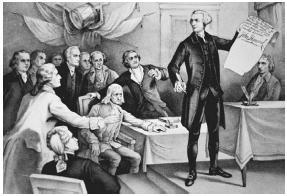
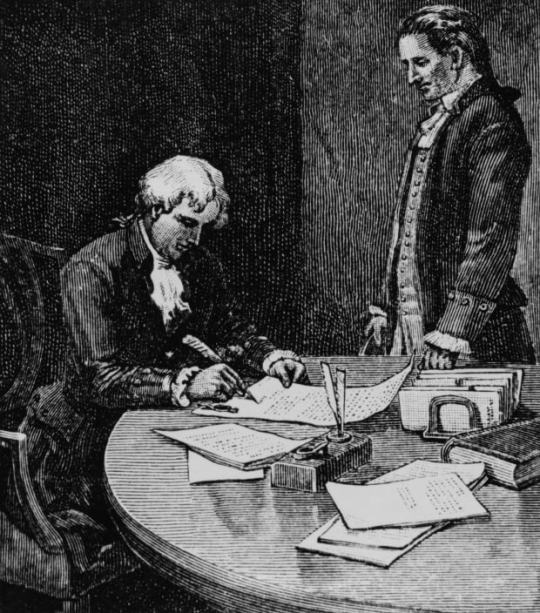
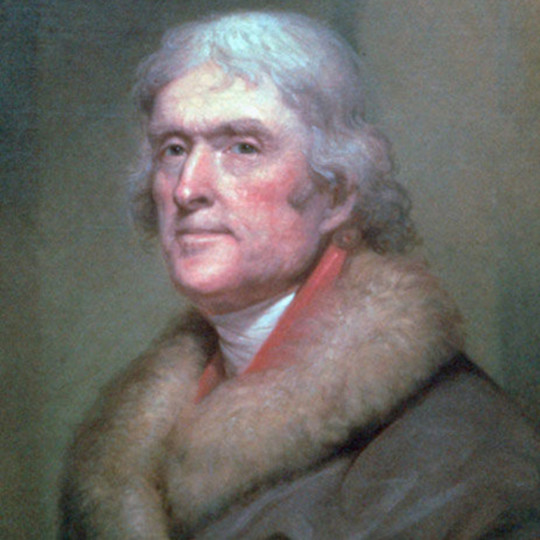
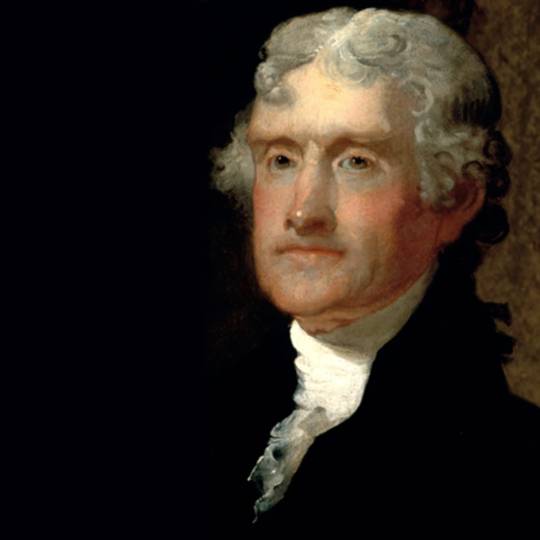
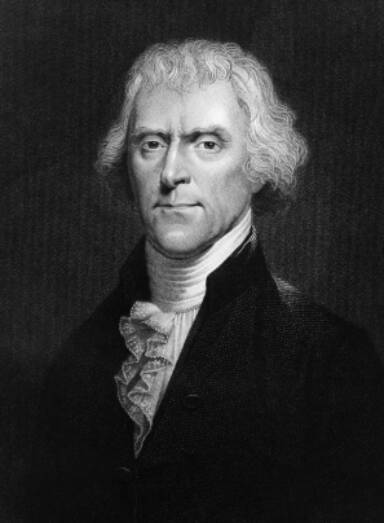
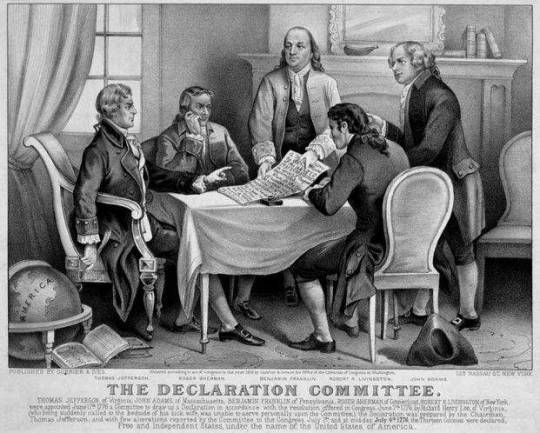
Arrivals & Departures 13 April 1743 – 04 July 1826 Thomas Jefferson
Thomas Jefferson was an American statesman, diplomat, lawyer, architect, philosopher, and Founding Father who served as the third president of the United States from 1801 to 1809. He had previously served as the second vice president of the United States under John Adams between 1797 and 1801. The principal author of the Declaration of Independence, Jefferson was a proponent of democracy, republicanism, and individual rights, motivating American colonists to break from the Kingdom of Great Britain and form a new nation; he produced formative documents and decisions at both the state and national levels.
During the American Revolution, Jefferson represented Virginia in the Continental Congress that adopted the Declaration of Independence. As a Virginia legislator, he drafted a state law for religious freedom. He served as the second Governor of Virginia from 1779 to 1781, during the American Revolutionary War. In 1785, Jefferson was appointed the United States Minister to France, and subsequently, the nation's first Secretary of State under President George Washington from 1790 to 1793. Jefferson and James Madison organized the Democratic-Republican Party to oppose the Federalist Party during the formation of the First Party System. With Madison, he anonymously wrote the provocative Kentucky and Virginia Resolutions in 1798 and 1799, which sought to strengthen states' rights by nullifying the federal Alien and Sedition Acts.
As president, Jefferson pursued the nation's shipping and trade interests against Barbary pirates and aggressive British trade policies. Starting in 1803, Jefferson promoted a western expansionist policy, organizing the Louisiana Purchase which doubled the nation's land area. To make room for settlement, Jefferson began a controversial process of Indian tribal removal from the newly acquired territory. As a result of peace negotiations with France, his administration reduced military forces. Jefferson was reelected in 1804. His second term was beset with difficulties at home, including the trial of former vice president Aaron Burr. In 1807, American foreign trade was diminished when Jefferson implemented the Embargo Act in response to British threats to U.S. shipping. The same year, Jefferson signed the Act Prohibiting Importation of Slaves.
Jefferson, while primarily a planter, lawyer and politician, mastered many disciplines, which ranged from surveying and mathematics to horticulture and mechanics. He was an architect in the classical tradition. Jefferson's keen interest in religion and philosophy led to his presidency of the American Philosophical Society; he shunned organized religion but was influenced by Christianity, Epicureanism, and deism. A philologist, Jefferson knew several languages. He was a prolific letter writer and corresponded with many prominent people, including Edward Carrington, John Taylor of Caroline and James Madison. Among his books is Notes on the State of Virginia (1785), considered perhaps the most important American book published before 1800. Jefferson championed the ideals, values, and teachings of the Enlightenment.
During his lifetime, Jefferson claimed ownership of over 600 slaves, who were kept in his household and on his plantations. Since Jefferson's time, controversy has revolved around his relationship with Sally Hemings, a mixed-race enslaved woman and his late wife's half-sister. According to DNA evidence from surviving descendants and oral history, Jefferson probably fathered at least six children with Hemings, including four that survived to adulthood. Evidence suggests that Jefferson started the relationship with Hemings when they were in Paris, where she arrived at the age of 14, when Jefferson was 44. By the time she returned to the United States at 16, she was pregnant.
After retiring from public office, Jefferson founded the University of Virginia. Jefferson and his colleague John Adams both died on Independence Day, July 4, 1826, the 50th anniversary of the adoption of the Declaration of Independence. Presidential scholars and historians generally praise Jefferson's public achievements, including his advocacy of religious freedom and tolerance in Virginia. Although some modern scholars have been critical of his stance on slavery, Jefferson continues to rank highly among the top ten U.S. presidents.
0 notes
Text
North Dakota Republicans Move to Wrest Control from Biden, Place Power Back with the Constitution
North Dakota Republicans Move to Wrest Control from Biden, Place Power Back with the Constitution
An old idea is new again in North Dakota as a barrage of executive orders flow from the Biden White House in 2021. By Jack Davis Published February 6, 2021 at 11:28am As the federal government in 1798 teetered dangerously close to what James Madison considered a vast misuse of its powers under the Constitution, he authored the Virginia Resolution. The resolution affirmed that “in case of a…
View On WordPress
0 notes
Photo
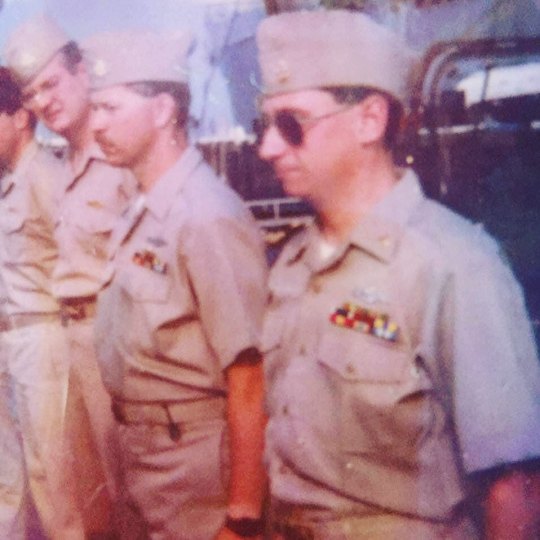
On 13 October 1775 a resolution of the Continental Congress established what is now the United States Navy with “a swift sailing vessel, to carry ten carriage guns, and a proportionable number of swivels, with eighty men, be fitted, with all possible despatch, for a cruise of three months...” After the American War of Independence, the U.S. Constitution empowered the new Congress “to provide and maintain a navy.” Acting on this authority, Congress established the Department of the Navy on 30 April 1798. In 1972, Chief of Naval Operations Admiral Zumwalt authorized official recognition of 13 October as the birthday of the U.S. Navy. #navy #navybirthday #usnavy #submarine (at Navy Base, Virginia) https://www.instagram.com/p/CGP592fjjUB/?igshid=17kiw6x43xms3
0 notes
Text
Thomas Jefferson was an American statesman, diplomat, lawyer, architect, philosopher, and Founding Father who served as the third president of the United States from 1801 to 1809. He had previously served as the second vice president of the United States between 1797 and 1801. Wikipedia Born: April 13, 1743, Shadwell, VA Deceased: July 4, 1826, Monticello, VA Presidential term: March 4, 1801 – March 4, 1809 Spouse: Martha Jefferson (m. 1772–1782) Children: Martha Jefferson Randolph, Madison Hemings, Eston Hemings, Vice presidents: Aaron Burr (1801–1805), George Clinton (1805–1809) be much to see why one of my Favorite may likeness in coincidence of likeness in the everything and nothing in everything and nothingness and as Philosopher yes Pythagorean numerology Jefferson was familiar with the practice but its sugar honey ice tea to them stuff to us like magic and stuff and Kauffman Hawkins like Tsu or Tzu cupid if its love you not stupid lacking in Lovingness or intelligence and well 5 cent 3rd President 2 Dollar bill letter two B And 3rd President C if so yes in God we trust in common day but Founded this was A Nation under God indivisible by all but whom if so like my initial the TH in Thomas after every 3rd and TH as high as numbers go past 4th like seals 7 or G Tao or Dao the way or the path maybe numerological science and study of numerology a love without apology or other things to say be it Theory Lesson plans Literature Educational the Her in Philosopher and his and hers or him and her like he and she not Shi like Delta four D not Hotels but this one coming along well During the American Revolution, he represented Virginia in the Continental Congress that adopted the Declaration, drafted the law for religious freedom as a Virginia legislator, and served as the second Governor of Virginia from 1779 to 1781, during the American Revolutionary War. He became the United States Minister to France in May 1785, and subsequently, the nation's first secretary of state under President George Washington from 1790 to 1793. Jefferson and James Madison organized the Democratic-Republican Party to oppose the Federalist Party during the formation of the First Party System. With Madison, he anonymously wrote the provocative Kentucky and Virginia Resolutions in 1798 and 1799, which sought to strengthen states' rights by nullifying the federal Alien and Sedition Acts.As president, Jefferson pursued the nation's shipping and trade interests against Barbary pirates and aggressive British trade policies. Starting in 1803, Jefferson promoted a western expansionist policy, organizing the Louisiana Purchase, doubling the nation's land area. To make room for settlement, Jefferson began a controversial process of Indian tribal removal from the newly acquired territory. As a result of peace negotiations with France, his administration reduced military forces. Jefferson was reelected in 1804.
Hawkins Versus 2/of

0 notes
Text
War of Rights PC Games
Gary Larson's Far Side Cartoons
War of Rights is a multiplayer game set throughout the perilous days of the American Civil War, in the Maryland Campaign of September, 1862. My book dissects Trump's unprecedented assault on everything America has accomplished over the last half century to move forward on race relations-from voting rights to integrated schools to equal opportunity Where i Can Download War of Rights in employment and fair housing. These adjustments have been accomplished by folks who made sacrifices, place themselves at risk of being expelled from school, losing jobs, losing their mortgages, continual threats of violence and some even faced death.

In the lender?s point of view, it reduces the dangers of international bank lending , by way of diversification of loans to political entities. It also gives a lot more protection against selective defaults: unwillingness of a nation to repay its debts will be met with stress from a number of countries, whose banks are involved. Negotiations were also feasible, because at the exact same time, there are handful how to download war of rights of adequate creditors involved. On the other hand, a attainable danger of the approach, which has turn out to be increasingly recognised, is that in the event of a default, the repercussions will be spread over a wide component of the Euro-currency program. This has raised questions concerning the stability of the international banking technique.
In 1877, soon right after retiring as president of the United States, Ulysses S. Grant, embarked with his wife on a two-year tour of the globe. At virtually each and every place, he was greeted as a hero. In England, the son of the Duke of Wellington, whose father had vanquished Napoleon, greeted Grant as a military genius, the major architect of Union victory in the American Civil War. Parading English workers hailed him as the man whose military prowess had saved the world's major war of rights pc download experiment in democratic government and as a Hero of Freedom who had helped safe the emancipation of America's four million slaves. Otto von Bismarck, the Chancellor of Germany, welcomed Grant as a nation builder, who had accomplished on the battlefield something—national unity—that Bismarck was attempting to develop for his own men and women.
An additional episode of Game of Thrones, yet another battle for which to gird your loins. The teaser for next week's episode of Game of Thrones (the second-to-final episode ever, mind you) features War of Rights pc download a lot of your faves seeking stoically into the distance, the chaos of war creeping ever closer to snatch them by the necks and carry them off to eternity in the Seven Hells.
In spite of the law and notwithstanding the warning of the President in his proclamation, there were many people who were not disposed to play the game fair. As the time approached for the massive race, it was noticed that the individuals have been disappearing from the camps along the line and on the morning of the opening, there was quite a thinning out of the ranks and it was suspected that these men and women who had left us had slipped into the forbidden land the evening war of rights pc download prior to "by the light of the moon" and would be ready to occupy some very good bottom land quarter section at the hour of noon and prior to these who obeyed the rules could get there from the line. These folks who slipped in, in advance, have been named "Moonshiners" these days and the word "Sooner" was not applied to them for five or six months afterwards.

The Alien and Sedition Acts outraged the Republicans as further proof that the Federalists meant to stifle debate and dissent. In late 1798 the Republican-dominated state governments of Kentucky and Virginia adopted resolutions written by Jefferson and Madison respectively. These resolutions denounced the Alien and Sedition Acts as unconstitutional. They further How to Download War of Rights hinted that states could nullify enforcement of such laws inside their bounds. The other state legislatures, nonetheless, blanched at the doctrine of nullification and rejected the Kentucky and Virginia resolves.
173. A woman told police she had been beaten by the defendant at our” apartment and made a crucial. Police entered the premises with out a warrant and identified drugs in plain view. Later police learned the woman had moved out weeks earlier and had no authority to give consent. The Court remanded the case to decide How to Download War of Rights no matter whether police reasonably believed that the lady had common authority more than the premises.
Even so when one particular fails to articulate the distinction in between self and other that becomes the issue of identity. In urban grooves music our distinction from the Western culture have to be emphasized. Each genre of music has got its background influences but if other musicians take out one thing wholesale from one more genre of music there becomes a issue of identity. Genres of music like hip-hop are intrinsic to American culture, but if somebody who is not American begins How to Download War of Rights singing the same things that becomes a issue of cultural identity. This notion of ‘want-to-be-noticed' has compromised urban grooves music's credibility and quality. According to Tomlinson (1997), hip-hop culture has brought out new forms of collective identity, whereby the youths redefine their lifestyle and identity through parallel media spaces.
The conflict in between Matilda and Stephen was far from more than. Despite years of civil war, neither side seemed to have gained much ground. Matilda had been close enough to the crown to taste it, but her lack of political judgment and tact had lost her that chance. Her influence in England was so weak that only a week soon after Where i Can Download War of Rights Stephen was released from captivity, Henry held a council to justify his personal actions and released the rest of the clergy from the oaths they had taken to uphold her. It appears as although she only had a chance when Stephen was truly powerless, and as soon as he was free, that chance disappeared.
The Stamp Act and the flood of kingly offenses that followed developed in those who founded the United States a profound suspicion of what an unchecked government could do, and a sense that power and freedom are not likely to coexist comfortably in a democracy. A balancing mechanism was necessary War of Rights pc download. In addition to the body of the Constitution outlining what the new nation's government could do, needed was an accounting of what it could not do. The answer was the Bill of Rights.
0 notes